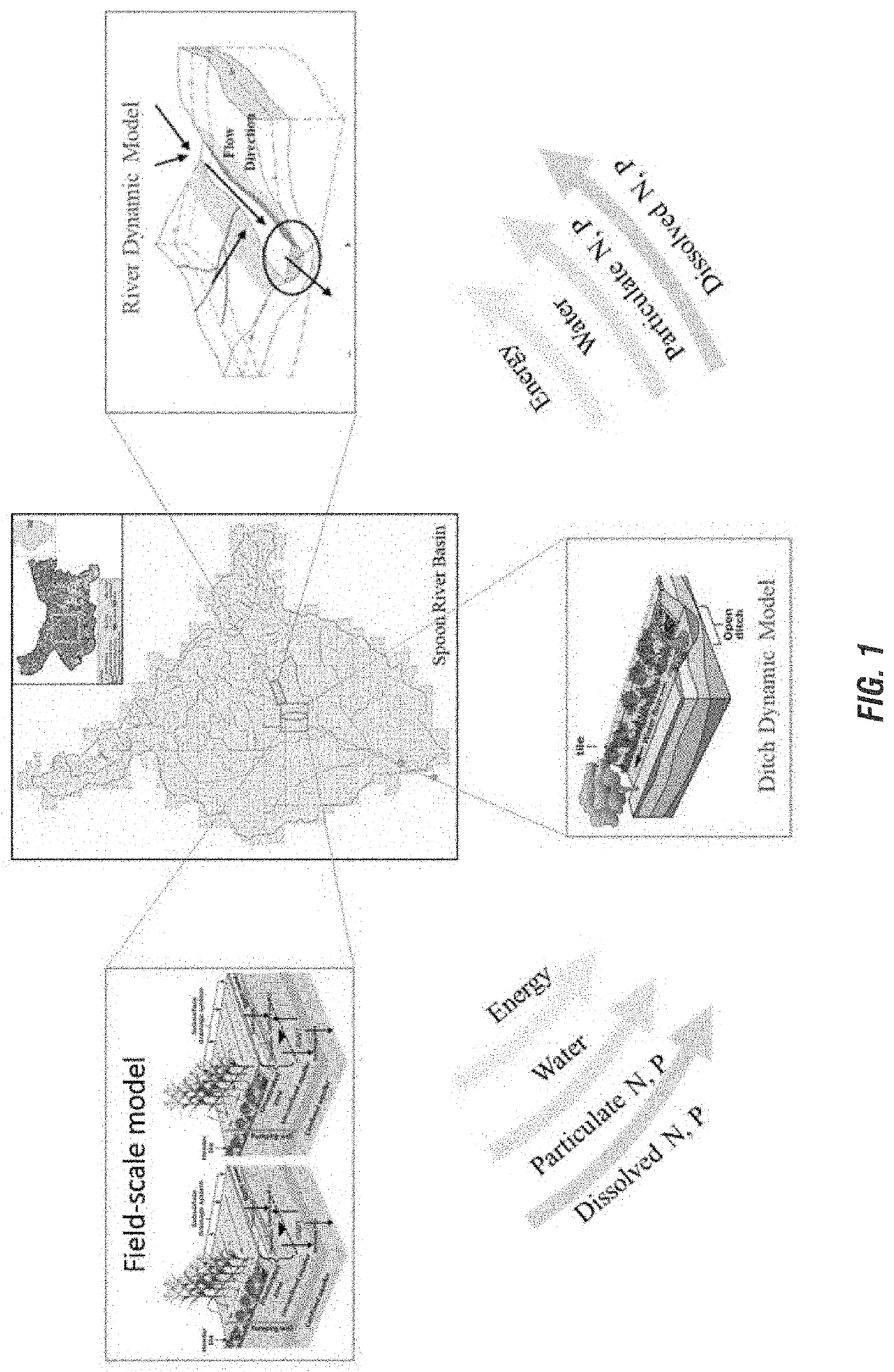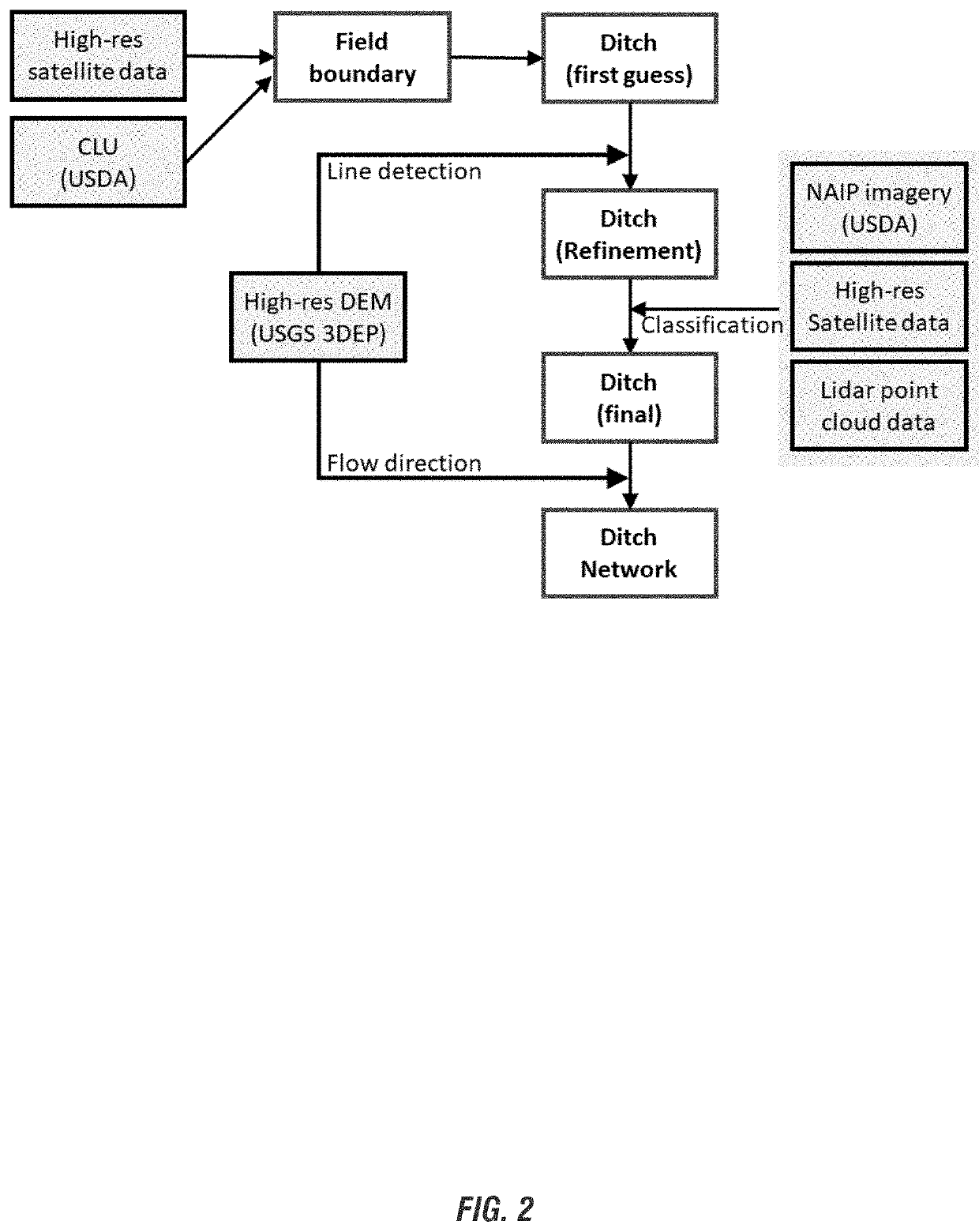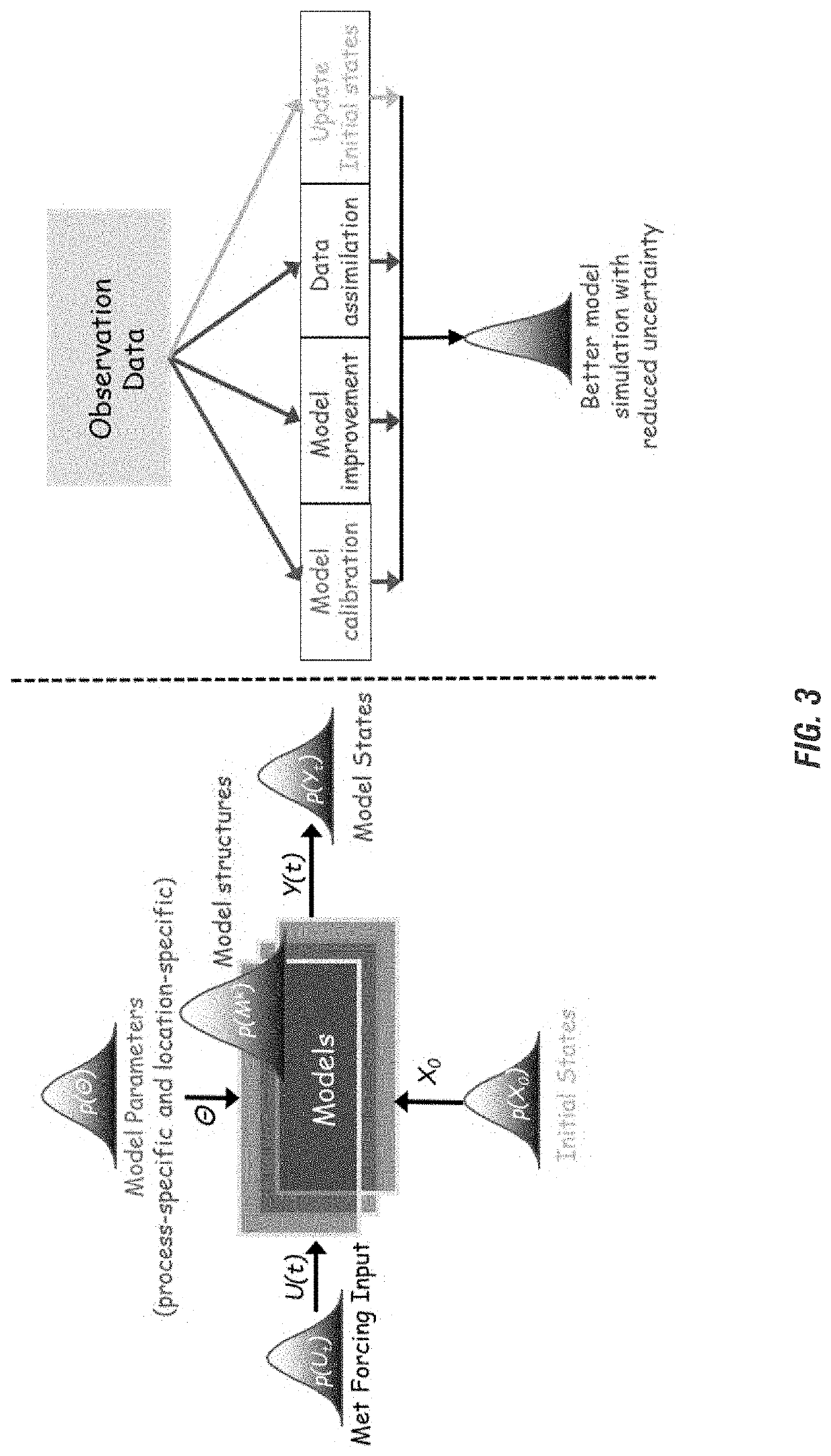Accessing agriculture productivity and sustainability
a technology of agricultural productivity and sustainability, applied in the field of accessing agriculture productivity and sustainability, can solve the problems of minimal contribution to the total environmental burden at the watershed scale, no consensus on whether net greenhouse gas emissions could be reduced, and great challenges for human beings in maintaining food security. high accuracy, high spatiotemporal resolution
- Summary
- Abstract
- Description
- Claims
- Application Information
AI Technical Summary
Benefits of technology
Problems solved by technology
Method used
Image
Examples
example 1
ated Multi-Scale Modeling Platform to Assess Agricultural Productivity and Sustainability (IMAPS)
[0105]According to at least some aspects and / or embodiments provided herein, an Integrated Multi-scale modeling platform to assess Agricultural Productivity and Sustainability, named “IMAPS”, is developed and utilized. The IMAPS modeling framework is designed to assess the environmental impacts of agricultural management from individual fields to watershed / basin to continental scales (FIG. 1). A scalable and hierarchical discretization (SHD) scheme for surface heterogeneity representation over agricultural landscape is designed for the IMAPS, in which each cropland parcel can be individually represented enabling hyper-resolution simulation. The SHD scheme is then coupled with an advanced agroecosystem model to simulate coupled energy-water-carbon-nutrient cycling processes at sub-field to field scales. Lateral water and nutrient fluxes are either dynamically routed along a ditch-river ne...
example 2
e and Cost-Effective Precision Irrigation Scheme with Field-Scale ET Products Based on Supply-Demand Dynamics
[0146]Field-scale evapotranspiration (ET) and soil moisture are critical for precision irrigation at fine scales. The most widely used approach for irrigation scheduling (i.e., when and how much water to irrigate) is solely based on soil moisture, which is usually estimated from soil water balance with crop water use (i.e., ET). ET is usually obtained from coarse-resolution satellite ET products and / or using Penman-Monteith equation and the crop coefficients with the meteorological data from nearby weather stations, while soil moisture is usually provided by soil water balance and / or soil moisture sensors directly. However, the traditional approaches for field-scale ET and soil moisture for irrigation scheduling is expensive and / or sometimes low-accuracy.
[0147]Furthermore, soil moisture deficit and atmospheric aridity (high vapor pressure deficit, VPD) both can cause reductio...
example 3
of Generating and Refining Crop Types Classification and Acreage Forecast During the Crop Growing Season (BlueBird)
[0175]An effective real-time crop cover classification prediction is essential to real-time large-scale crop monitoring. High resolution satellite optical data containing distinguishable signals of different crop types have been used by recent crop cover classification studies. However, existing works that merely use satellite information fail to reach a high accuracy, especially in the early growing season (e.g., before July) because of lacking informative satellite scenes that can be used to effectively distinguish crops. In this section, what is presented is a deep-learning-based method, herein named BlueBird, to accurately classify crop cover types in real-time at the national scale. BlueBird consists of three sub-models: prior-knowledge model, real-time optical model, and real-time weight model. Historical planting information, sequence of planted crop types in pas...
PUM
 Login to View More
Login to View More Abstract
Description
Claims
Application Information
 Login to View More
Login to View More - R&D
- Intellectual Property
- Life Sciences
- Materials
- Tech Scout
- Unparalleled Data Quality
- Higher Quality Content
- 60% Fewer Hallucinations
Browse by: Latest US Patents, China's latest patents, Technical Efficacy Thesaurus, Application Domain, Technology Topic, Popular Technical Reports.
© 2025 PatSnap. All rights reserved.Legal|Privacy policy|Modern Slavery Act Transparency Statement|Sitemap|About US| Contact US: help@patsnap.com



